|
"There are two primary choices in life: to accept conditions as they exist, or accept the responsibility for changing them." -Attributed to Denis Waitley If you do not feel like reading a long-ish article, there is a tl;dr summary at the end. In 2014 I completed my initial teaching education, having been awarded both Honours Class I and the Faculty Medal. I was then asked to write and deliver the Graduate Address at our graduation ceremony in July 2015. I still feel about teaching the way that I did then. My Teaching Philosophy still accurately sums up why I believe in the public education system and why I want to teach. I still find great joy in seeing my students' faces light up when they get it after grappling with some new concept or skill. I thoroughly enjoyed working with my Stage Three students last year and enjoy that they still put their hands up for a high-five whenever I pass them in the corridor or the playground. This year, I am enjoying Stage One more than I thought that I would and am learning an incredible amount from my team-teaching colleague. So why then, am I leaving classroom teaching? I was aware, going into teaching, that it was not the nine-to-five profession that appears to be the belief in society; that there was paperwork, marking, planning, excursions, parent-teacher interviews and politics. What I did not realise, and what I do not think anybody is capable of realising until you are waist-deep in teaching is just how pervasive and all-consuming teaching is and can be. It is hard enough to feel the need to be in my room at six in the morning in order to get things set up for the day, to work out what writing groups my students need to be in today based on their writing from yesterday, to decide which students need to move up a reading level, what strategy am I going to use to engage a challenging student, and and at the end of Wednesday, to get the room tidied, the marking done and the notes up to date for my job-share partner to take over on Thursday. To then be feeling guilty on the weekend for not getting the things I could be doing, or getting a head start on, when I should simply be enjoying time with my wife and daughter during these beautiful moments of infant joy (she is so close to crawling, and her belly laugh is the sound of pure joy) while they are there, is not how life should be lived. In 2012 I completed my first professional experience placement. It was in a Year Six class and was actually at my current school. It was a steep learning curve, but for the first time in my adult life, I felt like I was in the right place professionally. In 2015 and 2016, I was employed on a temporary basis, for four days a week as an RFF teacher in 2015 and three days a week in a job-share arrangement on Stage Three. We got by financially as Mrs. C21 was employed full-time. As my regular readers would be aware, however, our amazingly bright and bubbly baby girl was born in August last year, and thus we are now relying solely on my 0.6 FTE wage. It is not working. The last few years have been challenging at my school as well. I was offered the temporary contract in 2015 as the Librarian was on long-term sick leave and ended up passing away during the Semester One holidays. I got to be that guy who took over her space and her role. No-one ever said, nor gave even a hint of negativity about me being in that role in the library. Everyone was welcoming and helpful. Despite that, I personally felt awkward and struggled with being in the Librarian's shadow and did not feel that I could really make the space my own, leaving everything up on the walls that was already there and not even going into the Librarian's office except to add library specific items to a pile. I was offered another temporary contract for 2016, and though I was thankful to have a set class rather than be working in an RFF capacity, being employed for only three days a week was frustrating. It tightened up the options for casual work, and made it difficult to get really thoroughly and deeply stuck into anything. I did, however, learn a lot about my practice and formed some strong relationships with my students and I am proud of what I achieved last year with them, especially when I see the growth in the start of year vs end of year testing data Additionally, the school has been undergoing a significant building project in order to remove the twelve demountable buildings and return the playground to the students to...you know, play on over the last two years. It has been a cause of significant stress, frustration, worry, and excitement across the staff. The building is now complete with only the final touches of the new playground spaces left. The teachers in those spaces are excited about the potential for what they can achieve and the new library has a new librarian who is doing an amazing job setting up after the school has been without an active library for a few years. Oh, we also had a new Principal start at the beginning of last year and multiple staff retirements which has generated a lot of change as well. This year I was offered another three-days-per-week job-share arrangement, in a team -teaching context....in the old library. To be fair, it has been structurally changed insofar as the walls dividing the building into library/office/computer lab were removed, making it one big open space. I was apprehensive about being back in their again, however, I am confident, and have been told by some of the staff, that the previous Librarian would be proud as punch to see the space as it is now and to see the students busily working, learning and enjoying the space. In addition to the work involved in teaching, there is also the time spent writing these articles, making the FTPL videos, and attending conferences to consider, which although separate to my teaching, I consider integral to my teaching persona. All of that wrapped up together is the context from which Mrs. C21 and I made the decision that it was time to leave classroom teaching. A few weeks ago, I received a message from a HR Manager who said they wanted to chat to me about a position they were advertising and for which they felt I might be a good fit. It seemed to be completely out of the blue and gave enough information to have me curious and so we e-mailed back and forth over the weekend discussing some basic details of the company and the role. Things continued to move along and after some more phone-calls, Skype video-calls, a face-to-face meeting, and further e-mails and phone calls, I was formally offered a full-time, permanent position with the company. Full time. Permanent. Those words are like gold to a casual or temporary teacher. Mrs. C21 and I spent many hours during the whole process discussing the role, the potential, the status quo, the challenges that this role would present to me personally and us as a family and how to negotiate those challenges, and whether it was going to be good for us as a family and what the ramifications for me professionally might be. Ultimately, however, I accepted the offer to join ClickView as their NSW/ACT Education Account Advisor. In essence, I will be working with teachers to provide training, support and professional learning in schools using ClickView across NSW and the ACT. I was asked if I would miss the classroom and I absolutely will. Over the course of the e-mails, phone and Skype calls, and face-to-face meetings, however, I gained the belief that from a certain point of view, I am not leaving the classroom per se. I may not be standing in front of a room of students, but I will still be present through the teachers with whom I work. One of my personal goals as a teacher is to be able to look back and know that I have had a positive impact on the lives of my students, to be remembered with the fondness that Ms. Flexer was remembered by her students. I can certainly achieve that in my current role in the classroom. This new role gives me scope to scale that impact, and though I may not have the connections with students that I currently do, I will be able to positively influence their lives through my work with teachers. I also feel that over the last six to twelve months that I have been at a cross roads in my teaching career. I enjoy being in the class and working with my students. I have also found that I thoroughly enjoy being able to work with colleagues to deliver professional learning opportunities and I feel that I am more comfortable and confident in that scope. I also thoroughly enjoy engaging with research and data, and miss being absorbed in reading and writing. This role, along with giving me stability and security of employment, allows me to continue to engage with education in those same three areas, whilst being encouraged to grow and develop in particular areas that interest me professionally and with scope to be creative. I said during the face-to-face meeting, and I genuinely believe it, that although this role would see me leaving the classroom, I do not feel that I am leaving teaching. I am still working with students and teachers, it is just a different context. I will be sad to leave my current school. I had my first professional experience there, my first excursion, my first class and I feel that I am leaving positively. I am grateful to the support and encouragement of my job-share partners of this year and last year, to my team-teacher who has been a fount of professional learning so far this term, to my mentor who allowed me to blather on about whatever it was that had me excited/frustrated/tired/annoyed/cynical/worried and offered her advice and guidance, humbly and patiently. I am looking forward to not having the will I be offered another contract for next year stress, which normally begins to set in around the start of Term Three. I am relieved that we won't be continuing to go backwards financially and the incumbent stress of being in that position. I look forward to not feeling guilty for not working on the weekends or at night. I am excited for this new journey. But most importantly, I am excited that when I am home, that I will be able to be more present with my family, that I will not miss important milestones because I am too busy programming / planning / marking / writing reports / writing rubrics / spending money on resources for the science lesson. My wife is certainly incredibly happy about me being more present than I am at the moment. Ultimately, I had to make a decision based on what was best for my family. It just so happens that it also provides an incredible opportunity professionally. My final day in my classroom will be tomorrow, Wednesday 8 March. As always, thank you for reading. The tl;dr version is that I was offered a permanent, full-time position with ClickView and it is in the best interests of my family and I to take it, so I have.
0 Comments
Welcome back for my review of session three of Jennie Magiera’s master class at FutureSchools 2016. If you have missed the previous two articles, you can read about session one here and session two here. The day to this point had been full of energy and excitement, had been engaging and for me, personally, very much worthwhile attending. I feel that the badging concept discussed in session two was something that I could potentially implement in my classroom whereas when I have heard about badging in the past, such as here, I have been left feeling that it falls into the too hard basket. This session, however, was full of activities that I feel confident that I could take back to my school and implement in either the staffroom or the classroom, within the appropriate context. Jennie spoke about IEP’s, or Individual Education Plans, a document utilised to help with planning for and making adjustments for students with additional needs (whether that be below or above the grade standard) and how they are a document often perceived negatively and that we need to change that perception by using them positively, for ourselves as teachers, as a method of focusing on a single problem, what Jennie termed a problem of practice. When Jennie first entered the role of Chief Technology Officer (CTO) within her school district in the United States, she said that she found she would enter a school and that teachers there would literally turn and run in the opposite direction; “she’s the tech lady who’s here to make us use tech!” Jennie wanted, and needed, a way of changing the perception of technology in education, this ethereal and magical thing that Jennie heard teachers downplay their self-efficacy with “I’m no good at technology.” It is a refrain that I have heard far too often. The Teacher Individual Exploration Plan (TIEP) that Jennie formulates is a different approach to thinking about technology in the hands of teachers. The object is to shift the focus from getting better with technology to getting better as educators. The second goal is one that we should all be striving for, one which teachers the world over invest time and money out of their own account, investing in their ability to be a better teacher. Jennie came up with what she called gripe jam. Gripe jam is a process which consists of every teacher in the room having a stack of post-it notes (side-story: Jennie found that having too many post-it notes in your luggage registers as bomb-components with customs! Apparently it has something to do with the adhesive used on them), and when presented with various daily scenarios, the teachers write down all the problems they encounter in that scenario with one problem per post-it note, and generally only one to two minutes per scenario. We all complain about something in our lives, but when was the last time you were not only given permission, but encouraged to do so? The scenarios were daily situations that she refers to as problem catalysts, linking this process to the wonder catalyst from session one, and were typical situations that any teacher would be able to relate to; arriving first ting in the morning, the middle of the first teaching block, planning / marking time, professional development sessions run by the school, preparing for the start of a new school year etc. The key here, as with the wonder catalyst process, is not to audit the problems. It does not matter what anyone else at your table, in your school or in your district office thinks of that issue, if you perceive it as a problem, than for the purposes of this exercise, it is a problem. Step two involves arranging all of your problems into a continuum from most frustrating to least frustration, in a single line. For this, participants need to spread out so they have approximately an arm-span worth of free space to allow them to order their post-it notes into one continuous line. Jennie indicated that there can be no ties, that you must have a single line of problems, ranking every problem as more or less frustrating as the others. It is also critical here that you rank them based on how frustrating you find the problem. Not your colleagues / students/parents / administrators etc., just your frustration level. The next step turns this ranked list into a scatter plot and is aimed at reflecting on how many people are frustrated by the same thing. If you are the only person who finds something frustrating, then you would move it down the y-axis, if everyone is frustrated by it, then you would move it up the y-axis. This process allows you to reflect on then audit for the purposes of creating the scatter plot, how widespread the impact of this problem is felt within your context, and can end up looking something like this: At this point I was wondering what the point of the exercise was. Despite being intrigued and finding it personally useful to categorise the problems and their relative levels of importance to each other, I could not yet see the overall purpose. The next step was brief; leaving your scatter plot in place, draw a star on those problems that you think you may be able to address or fix with the right resources. This was about looking at a problem and thinking “if I had x then I could probably do y about it, which might resolve part of the issue.”Additionally, we were to place a circle on those problems that we were passionate about, that thing in your school that you see as catastrophic and that you want to engage with and solve where no-one else is interested or sees a problem. This was something that I could understand in terms of its purpose relative to the task and my career as a teacher, and there were a few problems or issues in my scatter plot that, with the right resources and support, I believe I could potentially influence and accordingly added a star to those issues. It was the subsequent step, however, that I found to be the most powerful and useful. With scatter plots in place, indicating how frustrating the issue was to you personally as well as how many people also felt the frustration, with some indication on the post-it notes of your passion or belief about your ability to influence the problem positively, Jennie instructed us to go on a gallery walk. This involved us leaving our scatter plot in place and moving about the room, looking at other people’s scatter plots, looking for two things and leaving a mark on their post-it note, or a post-it note of our own per the image below. Looking at other teachers’ scatter plots and seeing problems that I was facing as well was reassuring; as it meant that I was not alone in facing x, that it was encountered by others, and from conversations with others in the room, I was not the only person who felt relieved in making those observations. The second aspect of the gallery walk was to leave either an idea or our contact details whenever we came across a problem that we felt we could positively contribute to. Personally, I returned to some advice on one of my post-it notes, which I will be able to follow-up on later, and I noticed a number of other scatter plots also had ideas and contact details, hopefully which the owner of the scatter plot found useful. At this point, we returned to the TIEP form, which Jennie has kindly given permission for me to share via the blog, asking that I note that it will be included in her upcoming book, Corageous Edventures. So I include a blank template of the TIEP here for you to access, in Google Doc format. After selecting one problem to focus on, and ignoring the rest for the moment, you need to get to know the problem, detailing as much as you can about what the problem is, factors impacting on the cause or the lack of a solution, what has been tried in the past as a solution to the problem, and what parts of that solution did and did not work as well as why, which looks like this on the TIEP form: Jennie related problems to the radio waves by reminding us that at any given moment there are dozens of radio station signals in the air in a big city, but that it is only by focusing your tuner on one radio band that you can listen to a station clearly. We need to select one problem of practice to focus on, otherwise our attention and effort is diluted across many issues, and each will suffer because of that. Jennie indicated that it is the same with attending conferences, that we should go with one problem of practice to which we want to obtain some ideas, help, tips or solutions for in order to focus our attention, our note-taking, and before all of that, our choice of conference stream and workshop enrolment, a tip that I have heard previously from Kirsty Nash (@NasherK), via Dr Inger Mewburn’s blog The Thesis Whisperer (@thesiswhisperer). This led to a discussion about teacher-led models of professional development. EdCamps are a crowd-sourced model with no presenters’ per-se , which does not need to be done face-to-face as they are now often offered via Google Hangouts. EdCampHome (@edcamphome) offers kits that lay out how to organise and run an EdCamp if that is a route you wish to go down. Further to that, Google Hangouts on the air (GHOTAs) allows you to have up to fifteen actively engaged participants who all have @education.gov accounts. This of course does not take into account the ability for an unlimited number of others to participate via simply watching the GHO and participating via a back-channel such as Twitter (GHOTA FAQ page) A virtual Professional Learning Network (VPLN) is also an important tool to continuously access professional learning on a topic or area that is of interest to you, outside of the professional development that is being offered in your school community. The added bonus here is that you can access a VPLN anywhere and anytime you are connected, which, with the ubiquitous nature of smart phones in society, is essentially anywhere, bring us around to a current buzzphrase: There is one more activity which Jennie took us through, another hands-on process which can be implemented easily in the school, which I will leave for the next article. For now, thank you for reading this, another lengthy article, and as always, I would appreciate any feedback whether here or via Twitter.
View the other articles in this series here. Education is not preparation for life; education is life itself. – Attributed to John Dewey I have sat down to write this particular article on a number of occasions and for various reasons, have ended up not doing so, however, I am determined to write it today and thus am staying back at school, with no, or rather no domestic, distractions. Whilst I checked out of social media, from an educating point of view, for the duration of the Christmas holidays, I was still perusing the various tweets and reading linked articles when they struck my fancy, e-mailing many of them to myself for later use. I have written previously about Initial Teacher Education (my Musings on Initial Teacher Education series can be found here) and there have been some articles that have made for interesting reading around the topic of initial teacher education, as well as teaching in general, that I believe are worth discussing. Greg Ashman (@greg_ashman) is someone whose style of writing I tend to enjoy reading, and his article The bad ideas that hold teachers back was no different. This particular article discussed, very briefly, the pedagogical practice of differentiation, citing it as seeming “…truthy enough…” but that ultimately, it does not have a solid bank of evidence supporting it. To demonstrate this, Greg included the below graphic: It is an impressive looking graph, however, I am not conversant enough in statistical analysis to understand whether what is being represented is actually statistically significant. I understand enough to understand that I am looking at a graph that would appear to demonstrate that the greater the percentage of lower secondary (which I take to mean Years Seven to Nine) teachers who profess to differentiate by providing alternate work either frequently or in almost all lessons correlated to a lower PISA mathematics mean score in the 2012 iteration. Greg provided a link to a pdf file from the National Research Center on the Gifted and Talented which he summed up as finding that: “…the teachers weren’t doing it right. So it is either something that works if you have particularly talented teachers who can implement it – although this has not been demonstrated – or it is an idea that doesn’t work at all…” I have mixed feelings regarding the concept of differentiation. I agree that in theory it does sound “…truthy enough…” but that in practice it often seems to result in learning opportunities of a far lower standard than the student needs (or, perhaps, is entitled to) or at the other end of the scale, fails to provide a sufficiently high challenge. I must note that at this point in my career, that I have not had a great range of exposure to how specific teachers differentiate specific skills, concepts or pieces of knowledge, and so I am drawing from a limited well, that being my own experience, which in this area feels like wandering in the dark, to a degree.
The next article I noted was also by Greg, and was titled A guide for new teachers. It contained a number of ideas and thoughts that I feel would be beneficial for new teachers to be aware of, and I think which the pre-service teacher I wrote about last year would have appreciated reading had I come across the article then. The final article was regarding teacher qualifications, job shortages, and accreditation issues, which I believe I will leave for another time, as those issues are complex enough, and have the potential for a lengthy article in their own right. I am also conscious of the fact that it is now just after five pm and that I still have a number of other things I need to do before I go home. I’ve learned that people will forget what you said, people will forget what you did, but people will never forget how you made them feel. – Attributed to Maya Angelou In a previous article, I began to write about the classroom ecology and digressed into talking about one of the programs that my teaching partner for this year, Mrs. W, and I have put into place, the classroom economy. In this article, which I am writing on Monday morning, with the sound of a leaf blower out in the playground and cars rushing past on the main road the only accompaniment, I want to talk about instilling a love of learning and ask that you think about how it is that you instill a love of learning in your students. One of the reasons why I teach was the two fantastic teachers I had when I was in Year Five and Year Six at West Tamworth PS. Mr. Davies and Mr. Hawkins were vastly different characters, yet both managed to impress upon me a love of learning.
In Year Five, I had Mr. Davies, short of stature, thinning hair, glasses and a love of challenging us with logic puzzles, including us playing, as a class group, Where in the World is Carmen Sandiago? on the class computer. I have no recollection of any particular skill or knowledge which he imparted to us in that year, however, I do remember feeling privileged, that I had been allowed to leave the class for portions of time to go to the school library and research (which likely meant copy from the encyclopaedia) Ancient Egypt, a topic with which I had discovered a fascination for at some unknown point in time prior. While I was, most likely, merely copying information from the encyclopaedia, I was doing so with the feeling that I had to do it well, and that I had to collect as much information as I could to justify Mr Davies’ decision to allow me this opportunity. I did not want to disappoint him, which resulted in my typing up many pages of text, systematically copied and painstakingly re-typed and then printed out at school. I distinctly recall being asked by Mr Davies what I had discovered so far about Ancient Egypt and being an excited nine-year-old boy, promptly rattled off a string of facts, much of which I suspect I did not truly understand at that point in time. Whether Mr Davies choice to allow me such unfettered, and in my memory, relatively unaccountable access to the library during class time was good pedagogy I do not think I could answer due to my own bias about the subject. However, it did instil a sense of excitement with learning, which was sustained and repeated on many occasions that year as I learned more and more, as I elected to do Ancient History throughout my HSC years, and which, even to this day, I still feel when I become consumed within a new topic which interests me, and that love and excitement for learning is something that I would sincerely like to impart to my own students this year. Achieving this will be difficult, however, I am confident that by being excited or passionate and appropriately animated while I am teaching, that by encouraging my students to take calculated risks, trusting in the supportive environment of our classroom, that my students will take their own steps towards becoming excited about learning. How do you create excitement in your own students about learning? “Once you’re halfway home, you know that you can probably get the rest of the way there. -Attributed to Janis Ian Today is Wednesday of Week Five which means we are halfway through the current term, and that many teachers are silently cheering that they are now on the homeward stretch. There is no small amount of tiredness and fatigue this term, as many teachers find themselves staggering under the burdens laid upon them by all of the additional extras that are currently the expected norm in the teaching profession. The after school meetings, the various clubs and groups that run during lunchtimes, the various intra- and inter-school competitions all take valuable time from a teacher’s day and add varying levels of stress and work to a teacher’s already busy and crowded timetable.
Personally, I am find myself alternating between incredibly tired and worn out and strongly motivated and energetic. On the one hand I am really happy with the progress that some of my students have made this term, particularly in infants, where we have been focusing on some fundamental computer skills, particularly typing skills. The self-efficacy that various students are showing now when compared to the beginning of term two, or even the beginning of term three, is vastly improved. In stark contrast with that, I feel like, in many ways, I am taking two steps backwards for every one I take forwards. I feel like I have not achieved anything this term, and this is backed up when I look at my program. However, I have spent a significant amount of time working on some fundamental computer skills which I identified as lacking in my primary students, and have needed to devote a significant amount of time to working on those skills, as they are part of the foundation of digital literacy. In that frame of mind, I feel like it has been a valuable investment in time for the long-term result, which I likely will not see, particularly for my Stage Three students. it is a reminder of the oft-quoted remark by German military strategist Helmuth von Moltke, which is that “No battle plan survives contact with the enemy” which can be converted, I believe, into “no teacher’s program survives the term unchanged.” There are also a large number of interruptions in the coming weeks, with Book Week (which I do in fact enjoy and have already organised my costume for the book parade), the zone athletics carnival, Infants athletics carnival, Father’s Day stalls, and the swim program for Year Two and Three students which spreads across two weeks. Looking at what is left to cover in my program this term and comparing that to the amount of teaching time I will have access to with the various interruptions, I do not think that I can complete my program for this term without sacrificing the attainment of conceptual understanding and deep learning by my students, a compromise I do not want to make. This program was also my first, and I was aware going into it that I was perhaps biting off more than I could chew in regards to what I set out to achieve. I do need to sit down and update my program with the various changes that I have made, and notes of what did and did not work in various portions of the program. I would very much like to hear how you manage your program and keep it up to date with what changes and modifications you have had to make, both impromptu and planned. “Teaching is not a lost art, but the regard for it is a lost tradition.” – Attributed to Jacques Barzun This most recent series of articles has been interesting to write, as it has required a significant amount of reflection on a range of areas that ordinarily would not receive a significant amount of conscious thought. The conversations that have emerged from this series of articles has also been intriguing and thought provoking. This was, according to the set of emerging themes I included in my original article, set to be the final article in this series. It is quite likely that a further article will emerge as a result of the conversations that have transpired as a result. This article will be examining the potential employment opportunities that are available in comparison to the number of graduates each year, and the number of active teachers not currently employed permanently.
In 2014 there was a series of articles in the print and broadcast media that indicated that there is currently a glut of available teachers in comparison to available positions, such as this article and this article. This is in conflict with articles from a range of other sources that indicate there is a shortage of teachers, such as this article. Further reading indicates that the truth is somewhere in between, with a glut of primary trained teachers and a shortage of secondary teachers in specific Key Learning Areas (KLAs), as indicated in this article. The general consensus, based on reading these articles and similar sources, appears to be that the initial teacher education (ITE) programs are graduating between five and eight thousand new teachers annually. The Daily Telegraph, in July 2014 cited research conducted by BOSTES which found that at least one third of the NSW DEC approved employment list who are unable to gain permanent employment within four to five years, desist in their search, either remaining in the casual or temporary workforce, or leave the teaching profession. It has been my experience as well that a range of classroom teacher positions are held by teachers on temporary contracts, such as single or two year contracts, often serving in the same role on a year-by-year basis as temporary teachers for up to and longer than ten years. Another article indicate that the shortage of teachers is actually occurring in secondary education in science, mathematics and languages. There is little apparent research that examines the reason for the disparity in training and opportunity, why pre-service teachers (PSTs) seemingly gravitate to the primary education sector as opposed to the secondary sector, and I would suggest that these questions be examined as they would yield valuable results that would guide future ITE course capacities. The Herald indicated last year that there were around forty-four thousand teachers in NSW employed on a casual basis, and that only around half of the sixteen thousand graduate teachers from the 2013 cohort had secured permanent employment four months later. These figures, as a graduate teacher, are deeply concerning. I do not know what the situation in this area is across the rest of Australia, however, here in NSW looking through the weekly jobs listing would uphold the position that there is a shortage of teachers in specific KLAs in the secondary education sector. Each week, there appear to be a significant number of mathematics, science and language classroom teacher positions advertised, with a large number of them being in rural or remote NSW. The NSW Department of Education and Communities (NSW DEC) is not ignorant of this situation, with a range of incentives being offered in an attempt to attract teachers to these remote and rural schools. These incentives may include rent assistance, subsidies, additional professional development release time, additional leave entitlements, climatic entitlements and isolation from goods and services allowances. Personally, I would happily secure a permanent position in a remote or rural location if not for the fact that my better half currently has a permanent position in her industry, with an excellent employer and colleagues. Accordingly, and with regard to a desire to have family support available while we raise our own family, we have made the choice not to relocate at this point. In regards to the demand and supply imbalance, I believe that there are a number of options for approaching it. The first and obvious option would be to reduce the number of places in primary ITE programs. In conjunction with this, I have heard suggestions that the HECS debt for the secondary subjects suffering from shortages should be negated with the caveat that graduates are required to be employed for three to five years before the HECS debt is removed, and the HECS debt suspended in the intervening period. The lecturer from my EDUC2103 course, Schooling, Identity and Societies, Keith Crawford, spoke about a solution that the English Government took in regards to a similar problem. I must note that I have not been able to find any articles talking about this, but that he was a teacher in England at the time that this program took place. Keith indicated that young teachers were leaving the profession due to their inability to progress within their career via promotions due to the number of positions filled by older teachers and administrators who were still some years from retirement age. The approach taken saw a significant number of these senior teachers being offered early retirement packages. This had the impact of creating a number of vacancies, which allowed those suitably qualified to progress through the promotion chain. I could only imagine the cost of this program, however, it would have some significant effects, both positive and negative. Positively, it would create a number of vacancies requiring to be filled, which would of course create vacancies further down the chain as teachers, assistant principals and principals all progressed. It should have (I am unaware if it did or not) create a culture of change as those progressing through due to the new vacancies would hopefully come through with new ideas and a willingness to embrace change and pedagogical and technological advances, particularly in the areas of twenty-first century learning. Negatively, it would result in a significant loss of knowledge and experience, which would need to be addressed. This could be achieved through options including mentoring, a stepped handover period for each level of responsibility, and a potential short-term shortage of teachers at each level of the hierarchy. I cannot see the Australian government adopting such an approach, due to the significant front-end cost. That said, I believe that a mixture of the two approaches I have discussed, both the removal of HECS debt for specific shortages, and the voluntary retirement program adopted by the English government would have a very significant impact in regards to reducing the number of classroom teacher positions held by temporary appointments, improving the number of permanently employed teachers. As always, thank you for reading. I would very much like to hear from anyone who has a suggestion for how this issue can be appropriately addressed. It is not a simple situation, and I think that changes need to be made to the entire system. See here for the list of articles in this series. “One looks back with appreciation to the brilliant teachers, but with gratitude to those who touched our human feelings. The curriculum is so much necessary raw material, but warmth is the vital element for the growing plant and for the soul of the child.” – Attributed to Carl Jung My previous article outlined a conversation I engaged in with Mark Johnson (@seminyaksunset) while he was the guest host for the @EduTweetOz handle regarding initial teacher education (ITE). As a result of this conversation, I felt inspired to write reflect on ITE in general and mine in particular and I identified six issues from that conversation that I wanted to address via this blog, which were as follows:
On Friday of last week (June 12), I posted the first article, addressing entry into ITE programs, and it generated some very interesting conversations and I received some very intriguing feedback, both in comments on the article itself, and via some Twitter conversations. My article today will address the issue of ITE structure and content. I will be dissecting my own ITE program and examining how the quality of teachers that it produces could be improved through modification of the structure and content. I also plan to include some ideas based on feedback I received as a result of my previous article. I completed my Bachelor of Teaching (Primary) / Bachelor of Arts degree through the Ourimbah campus of the University of Newcastle (Australia). I also want to say up-front that on the whole, I am quite happy with the program I completed, and that for me, personally, I found it to be satisfactory and that I am well-placed to be a good teacher as a result. From conversations with classmates during and since, there are of course those unhappy with certain aspects, and as I mentioned briefly in my previous article, there are entire expectations of being a teacher that weren’t discussed at all, but that, I suspect, is to be expected and would be consistent with the majority of universities. What I plan to do, is to outline the program that I completed before examining how I believe it could have been improved. My degree was a four-year (full-time) program consisting of two semesters per year and four courses per semester for a total of three hundred and twenty units of study. We were required to complete forty units of a discipline depth study (DDS), a Sustainable Community elective and in our third and fourth year or study we had the choice between undertaking the Special Education specialisation stream, the Honours (Graded) program, or an elective course. I moved a few things around and actually ended up completing three hundred and thirty units of study. I completed my DDS requirements under the mathematics and science umbrella and elected to undertake the Honours program. I also completed eighteen weeks of professional experience placements (two x four-week blocks and a ten week internship) as well as ten sessions of once a week for half a semester. The overview of my degree is below: The degree that I completed has since changed. Beginning at the start of 2015, all Bachelor of Education (Primary) degrees graduate with ungraded Honours. My understanding is that the ungraded Honours component incorporates concepts introduced in graded Honours, such as research methodologies, ethical considerations, epistemology, ontology etc. but that a research project is not undertaken nor a thesis written. If you are curious, click here to read more. How would I modify the program? I want to again state that overall I was satisfied with the ITE that I received. As with any situation, however, there are ways in which it could be improved, and below are the ways in which I would change my degree to make it more rigorous, and provide a greater level of preparation for teachers entering the profession. Year One Semester One
There were some interesting conversations, as I mentioned previously, as a result of my previous post. I was contacted on Twitter by Amanda Corrigan (@ajcorrigan) who is the Director of Student Experience, School of Education and Associate Dean (Student Experience) Humanities and Social Sciences at the University of Strathclyde (Scotland). Amanda advised that Strathclyde University conduct interviews for entry to the second year of their ITE program, with questions based on the student-teacher's learning from the first year program. Students, both those who do and do not receive approval to continue, are provided with advice about next steps. All students undergo a first year placement which may be in any institution with children such as traditional educational institutions, but also prisons, asylum seekers, sports clubs etc. Amanda also advised that Scotland’s newest teachers also receive a guaranteed year in school, a mentor and reduced reduced class contact. This has the potential to allow graduate teachers to focus on improving their pedagogy and classroom management with advice and guidance from experienced teachers. I also received insight from Corrine Campbell (@corisel) and Sally-Anne Robertson (@eduemum) regarding their ITE, which you can read in the previous article of this series. The content and structure of ITE programs, whether it be undergraduate or post-graduate, needs to be more rigorous, with a greater focus on an understanding of how to read and use the curriculum document as a tool for programming, how to apply TPCK and SAMR models to technology considerations, and more rigorous and explicit teaching around how to teach the KLAs; in addition to teaching how to write programs so that the KLA’s are, where possible, integrated in authentic ways that allow content to be covered across broad swathes of the curriculum. These integrated units should be used where suitable to allow time for our students to go about the business of learning how to think. As I said in my final article from the Teaching for Thinking Forum review series: “…learning is the product of thinking…” (Dominic Hearne), that “…good thinking is a disposition as well as a skill set…” (Simon Brooks), that “…we need to explicitly teach and embed thinking skills, including the metalanguage of thinking and metacognition…” (Dr. Jensen) and finally, that “…our job is done only when we see evidence of students’ understanding and reasoning…” (Constantin Lomaca). Thank you for reading this long article. I would very much like to hear peoples thoughts and feedback on what I have written today, whether it be in the comments here, or over on Twitter. This series will continue with a new article tomorrow, which I will endeavour to keep a shorter length.
See here for the list of articles in this series. “Thinking is the hardest work there is, which is probably the reason why so few engage in it.” – Attributed to Henry Ford My previous two articles in this review series from the Teaching for Thinking Forum have examined the presentations by Dominic Hearne and Simon Brooks. This article follows on with a review of the first presentation after the networking and reflection break, which was delivered by Dr Britta Jensen of Marist College presenting under the title Community of Inquiry – teaching methodology for the thinking classroom. Dr Jensen opened her presentation by making a statement that I agree with wholeheartedly; “[t]hinking skills should be explicitly taught and practiced,” a statement which harks back to Simon Brooks’ comment that “learning is the product of thinking.” Dr Jensen produced a non-exhaustive list of thinking skills and some of their applications, which I have included here.
You can see how many of these relate to the Four C’s as previously introduced by Simon and also back to the examination of generalisations and of underlying assumptions that Dominic Hearne spoke about in his presentation. The introduction of thinking skills, particularly the explicit engagement with the meta-language of thought, may increase the quality of class discussions (and as an aside, when combined with other strategies, may reduce the incidence of the Hermione effect) and increase the awareness of the thinking strategies which students are engaging with in a variety of contexts, that is, of meta-cognition around thinking skills and strategies which they are employing. Dr Jensen then produced the brief version of five steps for a community of inquiry:
Dr Jensen played for the audience the trailer for Sur le chemin de l’école and then we, as an audience, generated questions that arose from the brief clip (included below). The underlying aim of the exercise was to demonstrate the ease with which a questioning and thinking exercise can be initiated in a classroom. Dr Jensen followed this up by showing us a stimulus that had been used with a Stage One class: This stimulus generated a significant level of conversation with Stage One students, and the responses were quite articulate and demonstrate a high level of awareness when it comes to questioning and thinking. There are a range of potential benefits to explicitly teaching and practicing thinking skills, some of which Dr Jensen elucidated on, including the ability to contribute, constructively, to discussions, the ability to refine ideas and arguments upon the reception of new information (a skill which will carry across to the scientific domain), and very importantly, it teaches students to respectfully disagree. This last skills in particular is a critical skill for all students, indeed, all adults, to possess as it will be required, essentially, throughout their lives as a skill to avoid creating arguments and disharmony in various contexts. Dr Jensen closed with discussion of two schools in Australia, Buranda State School in Queensland and Bondi Public School in NSW, both of whom have introduced explicit teaching of philosophy and thinking, which has had a flow-on effect on NAPLAN results. Dr Jensen was quick acknowledge that NAPLAN is merely one way to measure, and that there is knowledge of any other programs that may have been put in place by those schools that may have assisted with the results. Dr Jensen provided some links to other resources for anyone interested in further development and using philosophy and thinking their teaching, as well as some links to academic resources:
Academic References
I would like to hear from anyone who has implemented explicit teaching and practice of thinking skills in their classroom, and the problems that were encountered and strategies for solving them, as well as the success stories with using explicit teaching and practice of thinking skills. As always, thank you for reading, and tomorrow will see the last article in this series on the Teaching for Thinking Forum, a review of Dean Lomaca’s presentation under the title Towards a Thinking Curriculum. See here for the list of articles in this series. “Five percent of the people think; ten percent of the people think they think; and the other eighty-five percent would rather die than think.” -Attributed to Thomas A. Edison 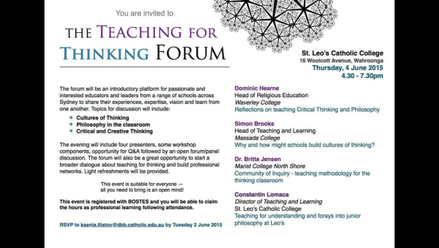 The teaching profession, I have often heard, and am discovering for myself, is often about the networking you have done and the connections you have forged through a professional learning network (PLN), both online and offline.Or, to put it in the vernacular, it is all about who you know. The only reason I heard about the Teaching for Thinking Forum, that was hosted last night by St Leo’s Catholic College in Wahroonga, was that my sister-in-law is a teacher there and shared the flyer on her Facebook wall, which is yet another indicator for the need for teachers to have a professional presence online, but I digress. This particular conference was aimed at showing how a culture of thinking can be and has been applied, and the beneficence of stretching our students to think in genuine ways, and the beneficence of us, as teachers, allowing time and appreciating our the output of our student’s thinking. To this end, the four speakers targeted different aspects of thinking and how they have been implemented in their schools. The night was arranged with two speakers on either side of a fifteen minute networking and refreshment break. At the conclusion of the forum, there was a further opportunity for networking and conversation with many attendees going for dinner together at a nearby eatery. The first speaker, and for me personally, the most engaging and motivating speaker was Dominic Hearne, the Head of Learning Enrichment and the Head of Religious Education at Waverley College. under the heading A model of / for Gifted and Talented Education (as used at Waverley College). Dominic outlined a BOSTES approved series of courses that that they developed and targeted towards those students who sat in the 80% – 95% range across key learning areas as a way of extending those students and providing opportunities for them to be challenged. Dominic’s first point was a discussion of the models of extension that are traditionally utilised which tend to fall into one of two buckets. The first bucket that Dominic identified was where those students are withdrawn from the regular classroom context and provided with either one-to-one or small-group learning situations where they are extended and stretched in their particular learning area. It was pointed out that this can create further difficulties in itself, as the student is then required to catch-up on the learning they were not present for as a result of their extension opportunities. This can have the flow-on effect of creating additional stress for the student, which is of course not a desirable outcome. The alternative that is often implemented is team-teaching, whereby a second teacher enters the classroom and provides one-to-one instruction that is aimed at extending the student. This however has its own pitfalls. In the early stages of such a practice, it can often be a source of much distraction to other students, as the new sounds, the discussion of the teacher and the student being extended, in provide an undercurrent of noise to the primary teacher delivering instruction to the majority of the class. Dominic indicated that Waverley College wanted to combine the beneficial aspects of both practices, and developed two courses which they have been approved by BOSTES. ‘Learning Enrichment’ is now compulsory for Years Seven and Eight, and ‘Human Society and Applied Philosophy’ is now an elective for Years Nine and Ten. “Pure philosophy scares the [students]. Learning Enrichment dresses it up in respectability” –Dominic Hearne Taking a step backwards, Dominic indicated that when they, as a school, identified that they wished to provide stretch learning opportunities for those students who were between the average and the top end of the academic bell-curve, the first thing that was done was the removal of the term Gifted and Talented as there is an extraordinary amount of baggage and expectation attached to that label. The use of Learning Enrichment as an alternative is not simply a case of ‘the same thing dressed differently’ but is an opportunity to widen the catchment net and enable those students who may not ordinarily be considered for a Gifted and Talented program, to be considered for this ‘Learning Enrichment’ opportunity. The entry course, Learning Enrichment, delivers explicit teaching in critical thinking skills, and forward-maps the current learning to the future, explicitly, so that students understand why they are undertaking the project. The statement is put to them that they are the future leaders, and that in ten years they will have graduated, not only from high school, but from university. This creates, immediately, high expectations, by saying to the students that you will graduate from university, rather than you might graduate from university. In addition to this, all members of the school executive are expected to engage with the delivery of this course as a matter of fact. “If students are not engaging with the [higher order thinking skills from] Bloom’s Taxonomy, that indicates a problem with the pedagogy, not with the student.” -Dominic Hearne The first unit, Dominic related to us, was an examination of epistemology, delivered as if it were a one hundred level undergraduate course, and done so without apology. Other units included were Problem Solving Skills, which was largely based on the concepts of the Future Problem Solving Program, in which students were expected to identify and solve a problem that was present within the school. This has result in presentations to the school business manager of how solar power can be utilised to save money, a presentation that included costings, and which has since acted upon with one building’s roof now being covered with solar panels. Dominic gave us an example of how the Applied Philosophy course is delivered to Year Nine and Ten students, by asking us as an audience a question he asks those students: what are the life lessons we can learn from Bugs Bunny? If it has been a while since you have watched a Bugs Bunny cartoon, here is a clip from YouTube from the fiftieth anniversary of Bugs Bunny featuring highlights of fifty years of Bugs Bunny in three and a half minutes: 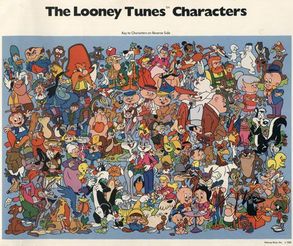 The question was hat are the life lessons we can learn from Bugs Bunny? Some of the responses that were offered up included that Bugs is always right, that animals can talk, that having a speech impediment is normal (think about how many of the core Looney Tunes characters have one), that cross dressing is normal (think about how many times you have seen Bugs or any of the others cross-dressing), that all skunks are French and are lechers and that death is not real. The point of the exercise is that the life lessons we learn from watching Bugs is that we create, in our minds, a universe which we accept without question. I remember watching Michael Jordan in the movie Space Jam, and not even blinking when Michael Jordan fell from the sky into the Looney Tunes world without getting hurt, because that is the world which my mind has constructed and accepted based upon years of watching cartoons. This line of thinking then gets applied to our own world, and leads the way into questioning our assumptions and beliefs, and to becoming critical thinkers, and is an exercise I would like to undertake with some of my Stage Three students to get them thinking about critical thinking and questioning assumptions. Other units throughout the program include a study of the Art of War and the Ethics of peace, an examination of St Augustine’s concept of a Just War leading into an examination of what happens when the war stops, and questioning why are some wars not really wars, why does the war on terror, need the ‘on terror’ designation and what that mean for the supposed war, and what happens when the Peacekeeping forces and humanitarian agencies enter after a war has concluded. “Gifted and Talented is perjorative and we wanted to avoid that due to the loading and expectations already found. Learning Enrichment widens the net.” –Dominic Hearne  The last aspect of the course was the literary study and, to be quite honest, sounds more difficult than what I was required to do in order to attain Honours Class I at university. Students are required to submit a three thousand word literary study, that is not about the story, but that is about the subtext of the story and the social, political and economic times in which the story was written, and in which the story is set. The student is then required to conduct a viva-voce, consisting of a fifteen minute presentation of their thesis and a fifteen minute defence thereof. This creates a mindset and a skillset in the students where they are required to thoroughly know and understand and be able to apply their knowledge and the concepts within their thesis, in order to adequately defend it from the questioning of their peers. It forces students to be able to organise their writing and their notes, and finally it forces them to be able to think on their feet. All of these are skills they will need to succeed in academia, both at the senior High School level and at the tertiary level, and are skills that will be useful in later life. It also creates a mindset for the students upon entering university that a fifteen-hundred word essay is nothing to sweat over, which puts them ahead of their peers. I took a lot from Dominic’s presentation, and much of what he talked about is very similar to what I hope to achieve with my primary students during the research project. Dominic kindly provided a copy of the Human Society and Applied Philosophy course outline to the audience, which I will be reading with great interest. I spoke briefly with Dominic afterwards, and will be contacting him to arrange a suitable time to visit the college and observe a lesson, and speak further to determine ways in which I can adapt the pedagogy and the concepts of the course to be suitable for my Stage Two and Stage Three students. If you are teaching explicit philosophy or applied philosophy, I would very much like to hear from you in regards to the pedagogical strategies you are using to allow the students to understand the complex concepts contained therein, and then apply them critically. My next article, on Tuesday (delayed due to the long weekend here in NSW), will focus on the second speaker, Simon Brooks, the Head of Teaching and Learning at Masada College and his presentation entitled Cultures of Thinking – An Introduction to the Why and How. Until then, thank you for reading, and my thanks again, to St Leos Catholic College for organising and hosting such a wonderfully inspiring and challenging conference, and to the speakers for giving up their time. See here for the list of articles in this series. The annual EduTECH conference is on this week in Brisbane, and it promises to be an excellent event, with some great keynote speakers, and of course the large range of exhibitors. I would have liked to have gone, but am unable to do so. If you are interested in following the happenings, keep your eyes open for #EduTECH and if you are at EduTech, then make sure you get along to one of the #TMEduTech sessions. I would particularly like to hear about Monika Kern’s two minute session on The RAT model – an alternative to SAMR. If you are unable to make it EduTech, consider sending an RSVP to the email on the bottom of the below invitation to attend the Teaching for Thinking Forum at to St Leo’s Catholic College this Thursday at 4.30. The agenda looks interesting, and I will either live tweet (look for #TeachforThink) or write a review the following day. Have a great week everyone, and as always, thank you for reading. “I will not let an exam result decide my fate.” – Suli Breaks, Vanity Fair, 2009 I recently wrote an article discussing the need to redefine our roles as educators titled Redefining Content. As I was scrolling through my Twitter Feed recently I stumbled upon a link to a YouTube video titled Why I Hate School But Love Education. It is a spoken word video, delivered by a young gent, and is an exposition on his views on schooling and education and it is rather thought provoking. On my first view, I am rather unsure how I feel about it, and am left with a certain feeling of cognitive dissonance, and feel affronted and as if my own philosophy towards teaching has been challenged, a feeling which I quickly quashed as being silly. The underlying principle of this man’s words is one that, on the whole, I think I agree with, that being the principle that we need to redefine what schooling and education are as they are not what they were even a generation ago, let along being the same as the early years of the nineteenth century. I’ll post the video below, and I would very much like to hear what people’s thoughts are. I am currently sitting in the lunchroom of the business my wife works in, waiting for to finish for the day. I am going out for dinner with work colleagues this evening and have arrived early to spend some time with her as I suspect it will be a rather late night.
I have just had a conversation with her boss, who was telling me about how his daughter learned to play the guitar. The father had purchased said guitar towards the end of the previous school term, but there had not been an opportunity to arrange for tuition until the commencement of the new school term. One afternoon, after arriving home from work, the father hears a guitar being played, the riff from Riptide to be precise, and assumes it must be a friend of his son’s. Upon discovering it was daughter, he asks where she learned to play as she had not yet had any lessons. Her simple reply: “I looked it up on YouTube.” Any skill or concept that educators today, whether primary or secondary, and including more and more of what is covered in tertiary education, can be learned via content on YouTube. Algebra, grammar, string theory, art history, the US civil war, the white Australia policy and how to run more efficiently are merely a small sample of what can be learned via YouTube. Where does this leave those of us who’s role it is to educate the students who can learn anything we could teach on YouTube? It is my contention that we are facilitators of learning, providing contextual knowledge and filling in the blanks, the minute detail that may not be covered. It also makes us troubleshooters, dealing with the misconceptions held by our students. We need to redefine what we are and what we do, because if everything we are supposed to teach can be learned via YouTube, what is our purpose? Thank you for reading and I would one to hear what people think and feel on this issue. Every successful individual knows that his or her achievement depends on a community of persons working together. -Attributed to Paul Ryan 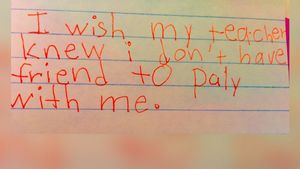 I stumbled upon this article via Facebook today, and it is so powerful, beautiful and heartbreaking all at the same time that I felt it had to be shared. Colorado Teacher Shares Heartbreaking Notes From Third Graders Kyle Schwartz teaches third grade at Doull Elementary in Denver. Schwartz encourages other teachers to use the same lesson in their classrooms. Although she says her students are a pleasure to look after, the educator of three years adds that many of them come from underprivileged homes. “Ninety-two percent of our students qualify for free and reduced lunch,” Schwartz tells ABC News. “As a new teacher, I struggled to understand the reality of my students’ lives and how to best support them. I just felt like there was something I didn’t know about my students.” 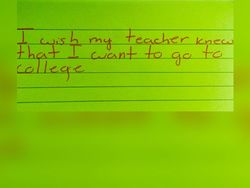 In a bid to build trust between her and her students, Schwartz thought up a lesson plan called “I Wish My Teacher Knew.” For the activity, Schwartz’s third graders jot down a thought for their teacher, sharing something they’d like her to know about them. “I let students determine if they would like to answer anonymously,” she says. “I have found that most students are not only willing to include their name, but also enjoy sharing with the class. Even when what my students are sharing is sensitive in nature, most students want their classmates to know. 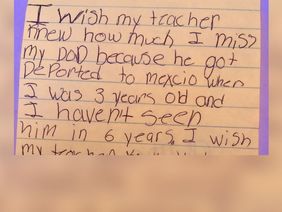 “Some notes are heartbreaking like the first #iwishmyteacherknew tweet which read, ‘I wish my teacher knew I don’t have pencils at home to do my homework.’ I care deeply about each and every one of my students and I don’t want any of them to have to suffer the consequences of living in poverty, which is my main motivation for teaching.” Blown away by her class’ honesty, Schwartz shared some of the notes on Twitter using the hashtag #IWishMyTeacherKnew, encouraging fellow teachers to employ the same lesson with their own students. 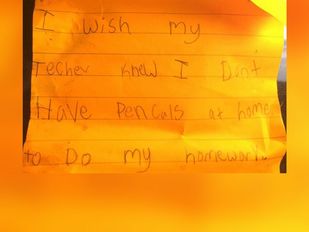 The tweets and photos of notes from other schools came pouring in from around the world. “I think it caught on so fast because teachers are highly collaborative and freely share and explore resources,” Schwartz says. “In the end, all teachers want to support their students, and #iwishmyteacherknew is a simple and powerful way to do that. 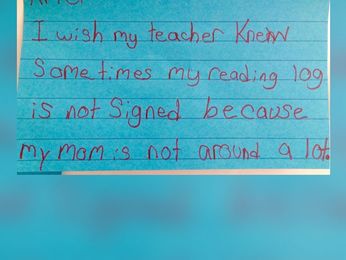 “Building community in my classroom is a major goal of this lesson. After one student shared that she had no one to play with at recess, the rest of the class chimed in and said, ‘we got your back.’ The next day during recess, I noticed she was playing with a group of girls. Not only can I support my students, but my students can support each other.” Schwartz says she also hopes her lesson can help her connect students and their families with the proper resources they need to live comfortably. —————– The lesson here is about trust and community, and building strong relationships between students and between the students and the teacher. There is so much potential for interpersonal learning in this simple movement, powerful relationships can be built on the back of this. Of course, there are going to need to be ground rules about how students react, with some silliness, but if you have a strong relationship with your class already, this could help to solidify it even further. I encourage you to not just read this article, or the original source article that I have copied into this article, do not just look at the #iwishmyteacherknew search results on twitter. Share it with your friends, your colleagues. share it with your students and ask them if they would like to do the lesson together. It may change the dynamic of your class, and it may take a dysfunctional class and help to sync it together. Those unruly students, the ones who are rebelling against life because they feel that no-one is in their corner? This could potentially turn them around when they see how you and their peers react and become supportive after there is a more general awareness. I would love to hear from anyone who plans on doing this, and how you implemented it. As always, thank you for reading. The dream begins with a teacher who believes in you, who tugs and pushes and leads you to the next plateau, sometimes poking you with a sharp stick called ‘truth’. -Attributed to Dan Rather One of the reasons I decided to teach was the excitement of the moment when the dots are joined for students’ between their prior knowledge and a new understanding. Knowing that you can make such a big impact on student’s life is hugely rewarding in itself, but also rather daunting. I was going through Kid President’s playlist on Youtube, and found a video that captures this feeling. A year one teacher, Mrs Flexer, had been teaching in the same school for forty-one years, and was retiring. Some colleagues wanted to send her off in style, and through Kid President, arranged for a variety of her former students to come back, including one man from her very first class. Many of them speak on camera, and tell how she affected their lives, and you hear one of them state that they put their success down to her. It is an incredibly touching moment, and it puts things into perspective, to know that in five, ten, twenty, forty years time, that there will be people who will still remember your name and the impact on your life. What do you want your students this year, to say about their time with you in ten years? Respect, like trust, is a two-way street. If you’re not willing to give it, then you definitely don’t deserve it.” – Attributed to Nishan Panwar All through my own primary and secondary education, teachers were referred to as either Miss [Last Name] (regardless of whether they were a Miss or a Mrs), or for the men, as Mr [Last Name]. The same went for any adult that did not require some sort of familial moniker, such as aunt, uncle, grandma, grandpa etc. That was just what was expected, because, we were told, it showed the teacher or adult respect. Now, as a teacher, I find that the same naming conventions still apply in all the schools that I have been asked to teach, and I find myself asking why? Why do students need to refer to me as Mr Mitchell, in order to show me respect? Students can certainly be disrespectful when referring to me as Mr Mitchell, as I am sure that any secondary teacher can attest to, so why do we force our students to be so formal with us? This thought randomly though whilst I was working on the series of blog articles reviewing the FutureSchools conference, and I made a short tweet about it, asking what message this sends to our students about respect, and the mutual relationship that we share with each other in the classroom. It is an issue that I believe should be talked about, and I would very much like to hear other people’s opinions on this topic. The only place, and I hesitate to call it a place, that I’ve heard of students being referred to by their family name is at Hogwarts School of Witchcraft and Wizadry, where right from the beginning the students are referred to in writing and in speech, as Mr or Miss [Family Name], whilst the teaching staff are referred to as Professor [Family Name]. This is deemed, according to naming conventions, as showing respect for the other person. If we demand to be called by our family name, and I’ve never come across a teacher allowing otherwise, as a sign of respect, should we not be showing the same level of respect that we demand for ourselves to our students? Respect, we are told after all, is a two-way street. Further to this point, when successful teaching requires strong teacher-students relationships in the classroom, what message does it send to our students about our level of respect for them when we only refer to them by their given name? Again, I would love to hear your thoughts on this topic. 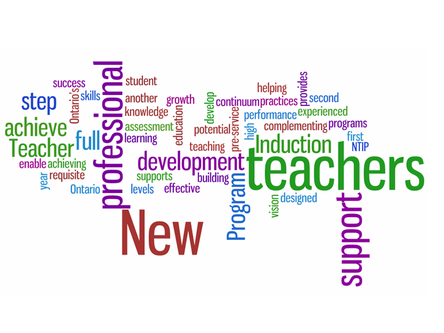 As tomorrow marks the beginning of the new school year for many students here in Australia, so it is also the first day of their new career for many graduate teachers, whom, having completed their teaching degree and having attained full time appointments straight out, seek to start out the new, and for them, first, year on a positive note. There are many sources of advice and tips on how to approach your first day in your classroom available on the internet (for example,here, here, here or here) and of course you will be regaled advice, tips and secrets used in the past by your new colleagues and you will hear how they survived their first days in the classroom. Without getting into the debate about the value, quality or nature of advice found on the internet (I would like to think that we are all aware of the fact that just because something is on the internet does not make it so (as made all too clear in this example from 2012). Further to this, just because an experienced teacher told you about a strategy that worked for them, it does not necessarily that it will translate into your classroom. I would like to point out that I am not saying that all advice you are given by experienced teachers is suspect, irrelevant or out of date. Indeed, you will likely receive a lot of valuable advice, particularly from those teachers within your new school, which brings me to the point of this short article. You are going to be teaching within a particular context this year. That context will be different to the one in which you will teach next year, the year after that and every year until you retire, or move into a non-teaching position within the education hierarchy. This is because you have students this year who have lived certain experiences. Those experiences are different to those experiences they had lived last year, and so the students’ themselves are different. A teacher may explain to you how they survived their first day of teaching ten years ago, and there will be some nuggets of usefulness within what you are told. However, those strategies worked for that teacher, with those students, in that year. The nature of children, the education system, technology and teaching means that you may not be able to use the same strategies as that teacher did (unless by some freak of Whovian time-travel you end up in that exact same classroom, physically and temporally) because the context is different. Unless you happen to know the current Doctor you will have to make adjustments to any advice you are given to suit your specific context. The children you teach this year have lived through their own particular experiences, as have you. The technology, and to some degree the pedagogy and curriculum, are also different, and you need to factor that into any strategy you are given as ‘advice for surviving your first day.’ Listen carefully to the advice you are given. It is offered freely, based on experience, and well-intended. You do not have to use the advice. You also should not reject it out of hand, even if you wholeheartedly disagree with it – you do not have to use it just because it has been offered. You may have come to teaching with particular ideals of what education is for, how classrooms and schools should be run, and what learning means. Ultimately, you will teach in a way that fits who you are, within the context of your classroom. Your students will change over the course of this year, and so the way you teach may also change, as you and your students grow and develop in your separate but conjoined pathway of learning. This of course is all advice, and so although I feel that it is useful, you do not have to use it, and that is perfectly legitimate. It is, after all, only advice. Good luck for the year to all teachers, but particularly to those of you whom are new to the profession. When planning for a year, plant corn. When planning for a decade, plant trees. When planning for life, train and educate people. – Chinese proverb. This was supposed to be (and I suppose it technically still will be) the final post in this series on Planning for Learning, examining the make-up of the Teacher’s Program, that elusive document that I did not see or hear any hint of during my four year degree, up until my internship, when I asked my cooperating teacher about his, which launched a series of conversations that I felt were quite fruitful, challenging and educational. Part one of this series was about the first component of the Teacher’s Program, namely, the Vision, and examined the Teaching Philosophy, Class Analysis and the Explanation of Special Programs therein. Part two examined the Planning component, and different methods of curriculum planning, particularly thematic planning. This final part was supposed to examine the Monitoring component, including Tracking across the Literacy and Numeracy Continua, keeping assessment records, creating learning plans and class groupings. In sitting down to write this post, I have realised that I do not know enough to expound upon what is or is not good or even best practice when it comes to the Monitoring portion of the Teacher’s Program. So this post will instead simply identify some of those methods that I have come across, and I will ask you, my readers, to provide feedback on the tools and methods that you utilise to complete this section From what little I have seen in practice in regards to tracking on the Literacy and Numeracy Continua, one effective method appears to the use of sticky notes, or post-it notes. For example, when designing a rubric for, let’s say, an English assignment, you may assign a particular cluster for different components for the ‘pass grade’ (whether you use A-E, or another variation of grading) of that assignment. This then allows you to scale up or down for the actual output of each student, making note of where that student is on a particular stream through use of a sticky-note, which simply has the students name, and which is then placed in the relevant cluster on the Continuum chart. If you decide, for example, that Cluster 9 is the ‘pass’ mark for Aspects of Writing for a particular assignment, you can then adjust a student’s placement on the continuum for that skill set based on their output in that assignment and in consideration of previous demonstrations of ability. You can also make a note elsewhere, whether it’s in a spreadsheet or on a tracking class role in order to keep a consolidated record of ‘marked’ clusters across the school year. I’ve seen that done quite effectively as it allows you to move students around at any point, for each of the skill sets, and is quick and easy to do so. That leads, then, into keeping Assessment Records. The vast majority of teachers with whom I’ve had discussions about this keep a class role with students’ names down the left, the name of the assignment/learning output/test across the top and the mark, of whatever variety in the appropriate matrix square. This can be particularly effective when done such that it allows the side-by-side placement and therefore comparison of marks for similar tasks (whether by KLA, skill or concept) across the year. I would love to hear from anyone who is doing things differently in this regard, as to how you do it. Learning Plans, from my limited experience, appear to be done via a pro-forma which seems to vary from school to school, though, again, I would love to hear from anyone who is creating custom Learning Plans for their students. Class Groupings is something that very much differs from school to school, and even teacher to teacher. There are a number of teachers that I’ve seen who still utilise rows of desks, those who use table-groups of four or six students, those who allow students to sit wherever they wish to, set groups for reading/mathematics/spelling (whether leveled or mixed ability) in their day to day teaching. I’ve seen a lot of teachers who utilise a variety of grouping strategies without realising they are using a particular strategy, such as DeBono’s Hats, think-pair-share etc., and with varied levels of success. My understanding, from conversations with my cooperating teacher about this component of the Teacher’s Program is that it should contain a list of those strategies you envision using, when (as a general indicator), and why it is an appropriate strategy. But again, I’m open to hearing other thoughts on this structure. The Teacher’s Program can be a huge working folder containing the complete set of resources a teacher possesses. However this seems unwieldy, unlikely to be reflected upon with any sort of regularity, and unlikely to be usable as a true program, wherein a casual teacher can open it up and get a general idea of the content that is being covered in the classroom at that point. These last three posts have been my attempt to solidify my own understanding of what the Teacher’s Program can be based upon a series of conversations with my internship cooperating teacher, and my observations of a few examples since then. It will most likely be 2015 before my next post, so have a safe and happy Christmas break, and as always, thank you for reading. See here for the list of articles in this series. Reference list
de Bono Thinking Systems. (n.d.). Six Thinking Hats. Retrieved April 8, 2014, fromhttp://www.debonothinkingsystems.com/tools/6hats.htm Planning is bringing the future into the present so that you can do something about it now. -Attributed to Alan Lakein One of the core tasks of a teacher, one that must be completed before any teaching can happen is the completion of the Teaching Program. The contents of the program often varies from school to school, and even from stage to stage and year to year in its requirements, but in its simplest form, and the form I have come to prefer, it should simply be a plan for learning for that year or term. Whatever your school’s requirements for the program, it should contain some basic elements and ideally have a simple structure, such as below, which is how mine is laid out (taken from my internship supervising teacher):
Within most schools, some variation of the above, with more or less information/detail will be required, but this, I think is a fairly sensible and succinct program format and will be the basis for the next few posts, forming a mini-series on Planning for Learning. The first thing to consider when setting out to create your program is what is its purpose? What are you trying to achieve, other than to conform to any required policies? It should of course be noted that a teacher’s program is a legal document, and can be (and I have been told, at various times has been) entered into court as evidence in legal cases but it is not, nor should it be, why you write your Program. There are a number of reasons for writing a program.
Programs can be daunting. I have seen programs that are lever-arch folders, full to the brim, with every lesson, every resource or idea seen, permission slips, multiple scope and sequences; out of date, useless and irrelevant information, and have been told that it is a “working folder.” My view at the moment is that if it is a working folder, it should be up to date, and concise, and should reflect why you are writing it. My view of a program is a single folder for a year, broken into four terms with dividers. Each of the three sections (Vision, Planning, and Monitoring) should be present within each divider, reflective of that term. If you want to keep a resource folder, by all means do so (and I do), but do not keep it in your program folder, or your program becomes a massive paperweight that is difficult to navigate and use. Your program folder should contain your program, and your resource folder should contain your resources. Of course, once you know why you are writing your teaching program, it can be rather daunting to sit down to a blank screen for the first time as the cursor winks mockingly at you on an empty page. I personally keep each specific document within my program as a separate word document to make editing and updating quicker and easier. The first, and arguably the most important section, particularly for a beginning teacher, is the Vision segment. Why? The first component within your vision is the most important aspect of the entire Program: your Teaching Philosophy. This is a very personal document, as it should be an explicit accounting of why you are a teacher. It does no’t matter necessarily what the reason is, as I said, it is a personal document in as far as why you teach is a personal reason, but you need to be honest with yourself about why you turn up every day. I’ve written previously about why I teach, and when I first wrote it out, I took it to my Supervisor and said to him, this is why I teach, but it doesn’t sound ‘right.’ I was used, at that point, to thinking in an academic, or more specifically, a university assignment frame of mind, which tends to frown upon personal opinion and ideas. It does need to be edited to sound professional after you have made your first draft, but it is not about having the right reason for teaching, it is about having your reason for teaching. That said, you can certainly make a personal vision of why you teach sound academic, and being able to speak and write in fluent Academic-ese is a great skill to have, particularly if you are of the progressive research-based and practice-driven frame of mind. You will likely take more than one attempt to distill why you teach down to an honest reason. My first draft Teaching Philosophy contained clichés and platitudes such as wanting to make a difference for the future, wanting to give back to society, loving working with children, and enjoying teaching children. These are all reasons why I have chosen to pursue a career of pedagogical practice, however, in and of themselves, they are not the reason why I turn up every day with a smile on my face. Accordingly, they don’t appear in my Teaching Philosophy. You may be stuck wondering now how to write your Philosophy. You may very well never have seen one (as a fun and interesting exercise, ask your colleagues when the last time they updated their Teaching Philosophy was, or, do they have a formalised Teaching Philosophy). There are many different formats that can be used, but none of those that I have seen are conducive to honest articulations of why you teach. My Philosophy is structured around three simple premises, and indeed, these are the specific headings that I use to organise my Philosophy:
This format, if done honestly and rigorously, will naturally cover the majority of the AITSL standards that we are now required to conform to, and will do so in an authentic and easy to read manner. Once you have articulated your Teaching Philosophy, it is important that it remains a living document, and changes as you and your circumstances change. Why I teach at the moment, married with no children, is different to some of my colleagues who may be single with or without children, married with multiple kids, on the verge of retirement, or in the prime of their practice, and how I teach and how they teach will therefore be different. When it comes time for my wife and I to start a family, the why I teach, I would expect, will change, and how I teach may change accordingly. Your Teaching Philosophy should therefore not be written and filed, never to be looked at again. It should be the subject of reflection on a yearly basis or as circumstances make appropriate. It may not change each year, but it forces you to re-examine and stay engaged with your personal vision for the role and purpose of education and how and why you engage with it. The class analysis is the second component to the Vision segment of the Program, and is one that does need to be completed yearly, and also needs to be updated on a term by term basis. The class analysis should contain a basic overview of the class; the gender split, the year split, the gender per year split (if a composite class), any general diagnoses and any other general information relevant to your class as a whole, and then delve into more specific information about your individual students. This section should reflect your understanding of your students and how they learn and may contain information such as their preference for learning styles (Gardner’s Multiple Intelligences), ESL information, specific topics or areas of interest that can be leveraged to increase engagement, or areas of particular disinterest. It should be an analysis of your students and thus will change from term to term, as your knowledge of them grows. At the beginning of term one, you may be working from what you know of them from conversations with their previous teachers, but your knowledge will rapidly grow, and I this should be updated fairly early within the year, and then each term. The Explanation of Special Programs is an area that you write nothing, little, or a lot about. This section has to do with programs that are specific to your class and not the whole school. For example, my classroom at the moment is running a 1:1 BYOD trial, which is not present in any other class in the school, and accordingly, this program is detailed in my ESP. Some examples include BYOD programs, thematic classrooms (i.e. a classroom is driven by a theme such as performing arts, sports, science and technology around which literacy and numeracy are based), specific literacy or numeracy programs that are in place such as L3, Focus on Reading, Mathletics or anything else that is appropriate. If you have a Special Program in your class, you will know what it is. That is a brief overview of the first segment of the Teacher’s Program, looking at the Teaching Philosophy, the Class Analysis and the Explanation of Special Programs. The next post will focus on the Planning segment of the Teacher’s Program, and will look at how I program, why I think it works and how to cover the incredible amount of content we are required to, succinctly. See here for the list of articles in this series. Teachers need to integrate technology seamlessly into the curriculum instead of viewing it as an add-on, an afterthought, or an event. – Heidi-Hayes Jacobs Initial teacher education (ITE) does give you a lot. I certainly feel like it has given me more than some of my peers indicate that it’s given them. But one thing that I don’t feel like it prepared me for was meaningful deployment of technology. Oh, certainly, we were told about SMART Notebooks, and to use ICT meaningfully, but we were not told what this actually meant in different contexts or how to ensure we were doing it.
Then, this year (2014), I walked into my Internship classroom; a Stage Three combined Year Five and Six class with a trial 1:1 iPad Bring Your Own Device (BYOD) system in place. Awesome I thought to myself, iPads! But then I realised that I had no framework for actually enacting pedagogical strategies through an iPad, no point of reference for how it would work in practice, or what could actually be done on iPads other than what I do on my iPhone. I’ve written previously about why I teach, but why I teach does not prepare or assist me to make technology integration meaningful in and of itself. Fortunately, my classroom teacher (CT) is rather progressive, and very much driven by research-based best practice. He introduced me to the SAMR model, developed by Dr. Ruben Puentedura and a way of thinking about EdTech that had never occurred to me before. The SAMR model outlines four ways in which technology can be used in an educational context, with two tiers of use which can be likened to lower and higher order thinking tiers in Bloom’s Taxonomy. The first two ways of utilising technology in the classroom are akin to Bloom’s lower order thinking skills, and are where technology is used only as a substitution to traditional pedagogies, or to augment traditional pedagogy. The second tier of the SAMR model is where technology is used to modify or to redefine the learning activity. This blog post will deal with the first half of the SAMR model, substitution and augmentation, which my CT likened to the lower order thinking components of Bloom’s Taxonomy. The way that my CT described SAMR to me was in comparison to the recent laptop program Australian high schools, formally known as the Digital Education Revolution which, among other things, saw every Year Nine to Twelve public high school student provided with a laptop. Whether it was a success or failure seems to depend on who you talk to (I know some teachers and administrators who are completely against laptops and tablets on the back of the laptop program). My CT said to me that if you ask parents buy a tablet/laptop as part of a BYOD program, such as is being trialed in his classroom, and all you do is used it as a substitution for a writing book or a textbook, that you will not necessarily have improved the learning outcomes, but you will have made the learning outcomes more expensive for the parents. That made perfect sense to me, and I can see that using them substitutionally would annoy parents. I see using interactive whiteboards (IWBs) purely for their projector as being merely a substitution for an overhead projector/tv and VCR or DVD player, and yes, this does happen. Substitution is an easy trap to fall into. You feel that you are using ICT, so you feel like you are contributing to Twenty-First Century Teaching, however, you are not actually changing anything, other than the medium being utilised. Changing the medium is in itself not necessarily a bad thing, but if that is all you are doing, then it is not enough. The next stage after Substitution is Augmentation. This is where the deployment of the technology only utilises a small portion of its potential. The technology is acting as a direct substitution with some functional improvement. An example of augmentation, I believe, would be using the often built-in functions of many e-textbooks available on digital devices, such as dictionary definitions, bookmarking, chapter hyperlinks etc. You have gained some functional improvement, but not really any pedagogical or learning outcome improvement. I have already mentioned that my CT likened substitution and augmentation deployment of technologies as being akin to the Lower Order Thinking phases of Bloom’s Taxonomy because they serve a purpose and are useful, but you will fail to challenge students much by doing so. Next weekend, I will examine the top half, or to continue the Bloom’s Taxonomy analogy, the ‘higher order thinking’ components of the SAMR model; modification and redefinition. I’d appreciate any feedback on this or my previous blog posts, but thank you for reading. See here for the list of articles in this series. “The mediocre teacher tells. The good teacher explains. The superior teacher demonstrates. The great teacher inspires.” – Attributed to William Arthur Ward First of all, I apologise for being tardy with getting this blog entry up far, far later than I said I would. I spent the second week of the school holidays at a football (soccer) tournament as a referee coach, mentoring and coaching young referees, and as much fun as it was, I came home on the Saturday before Term started, and was asleep by 8.30 that night, and didn’t wake until 10 the next morning. Then it was headlong into my Internship in a Year Five and Six class. This coming week is my third week, and I absolutely love it so far. I’ve got an excellent CT (classroom teacher), who is incredibly supportive and challenges me to justify what I want to do in a lesson, not to discourage me, but to help me focus on what the specific purpose of that lesson is.
Moving along. As you read this post, I’d like you to consider why it is you teach. What makes you get up every morning, get to school at seven-am for a nine-am start, and leave the grounds at five-pm, when the students all left at three-pm? For what reason do you do this? I promised last time that I would post my teaching philosophy, which was partly about making myself accountable for actually writing it, and partly about opening up dialogue on this topic. We were told that we had to write a teaching philosophy for our internship portfolio for university, and that it should reflect why we teach and what we believe about teaching, but beyond that, there was no guidance. I have never seen a practicing teacher’s philosophy, and so had no benchmark or starting point and so asked my CT about his. This led to a long conversation about the purpose of a teaching philosophy how to write it, how to structure it, and what it should be about. From that conversation came the realisation that it is an incredibly personal document, that should be revisited regularly (my CT said he goes back to his at the beginning of each year) as our lives, and therefore our reasons for teaching, change regularly. I have adopted the same structure for my teaching philosophy as that used by my CT as it makes sense, and helps to make it a real document to me, as opposed to a useless of piece of academia, submitted for an assignment and then consigned to the dustbin. It is based on three questions, which form the document structure. The first section is headed “Why” and is an answer to the question “why do I teach?” The second is informed by the first, and is headed “How” and outlines how I will teach. The third section, “What” is what I will teach, and is mandated by the syllabus documents we are all required to work within. I thought I knew why I teach. However, when I sat down to write my philosophy, I found myself writing a series of clichés such as I like working with children, all children should have the opportunity to succeed, and I want to make a difference in the world etc. Although I do agree with those statements, they are not what compels me to teach, and makes me excited to be going down this career path and so they felt hollow when I put them on paper. I knew inside myself what the real reason for my desire to teach was, but have always felt that it was not right/rigorous/academic enough, and so have always shied away from using it on those occasions when the question of why I want to teach comes up. When I made that comment to my CT, he nodded and said that that is the reason why it’s a personal teaching philosophy, and not an academic assignment. It has to be something that we as teachers can look at on those days when we want to headbutt a brick wall and that will make us smile and remember why we do this. It should be personal to each of us, and so will be different for each of us and it will then influence how we teach. S/He who teaches for money teaches differently than s/he who teaches for a desire to create change in the world. This, then, is my first draft of part one of my teaching philosophy. I am still working on translating the why into the how in such a way that it makes sense on paper. Why Do I Teach? I teach for two reasons. I had two amazing male teachers in my own primary education. Both were strong men whom I looked up to, as both had a strong presence, as they were encouraging of my strengths and chiding of my weaknesses, pushing me to work on them. They were men who were able to work with all of my peers, challenging each of us at our own academic level. My three younger siblings on the other hand, across their combined eighteen years of primary education, had a total of one year with a male teacher, and the difference that that year of a strong male influence every day at school made on my sister and her self-confidence in dealing with her brothers and in talking to other male, non-immediate family members, was tremendous. My youngest brother needed a strong male role-model as a steadying influence and to provide guidance on interpersonal skills in the day-to-day situations at school that a father does not have access to. I teach because I want to be the positive male role model for those students who otherwise may not have one. The second reason that I teach is due to a love of learning and discovery, a love that was instilled by my family, but nurtured by my primary school teachers. It is that love of learning, the desire to know more about areas of interest, and the excitement of the moment when the dots are joined between prior knowledge and new understanding that provides the second reason why I teach. I would love to hear from other teachers as to how you set out your teaching philosophy, how you utilise it, and even just why it is you get out of bed to teach every morning. This is my first draft, and I’m still working on cleaning it up to make it more academic sounding, but at the same time, if it’s a personal document, do I need to? I’d love to hear your thoughts. See here for the list of articles in this series. |
Categories
All
|
Support |
© COPYRIGHT 2015. ALL RIGHTS RESERVED.
|

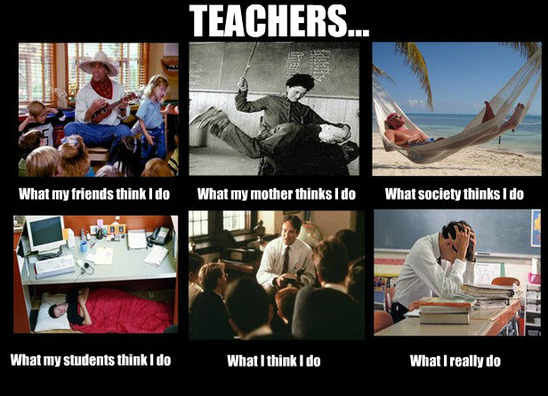
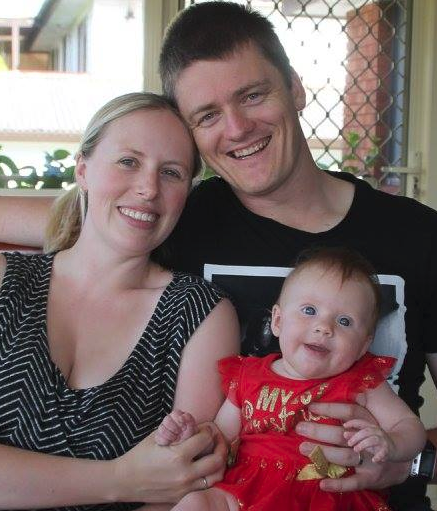
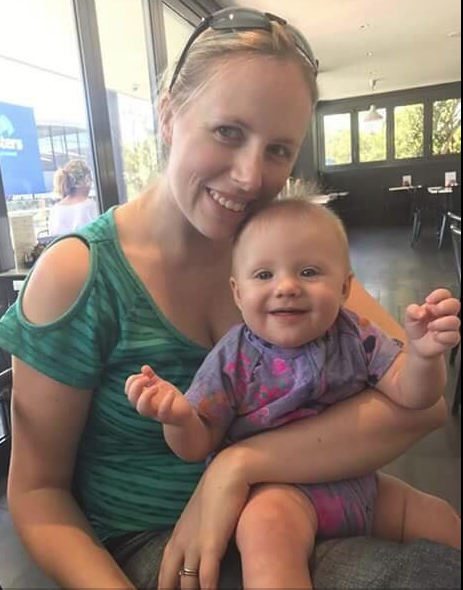
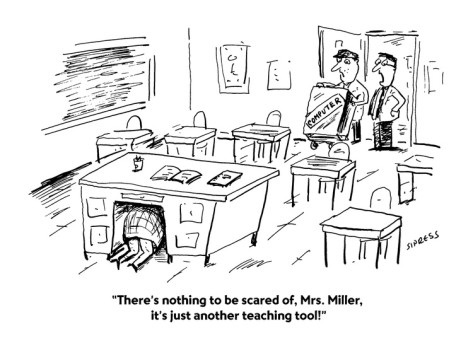

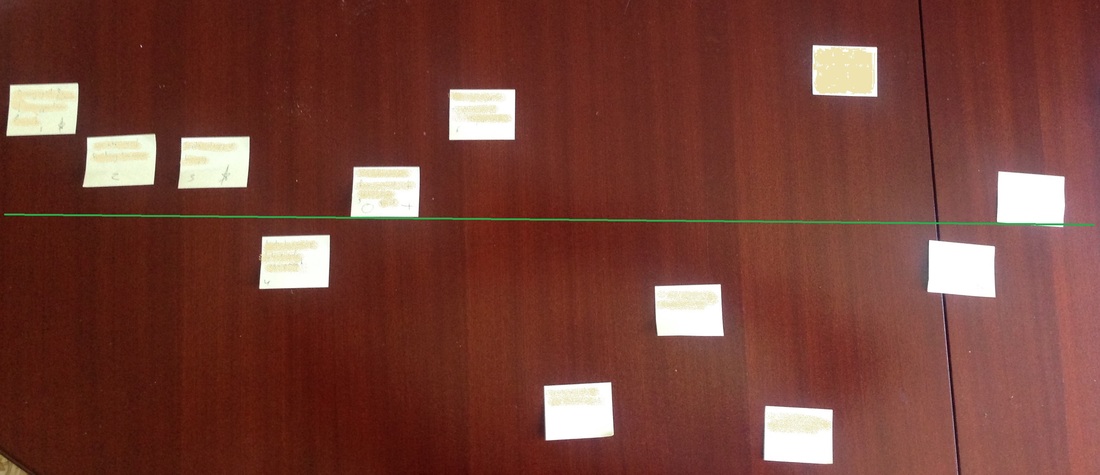
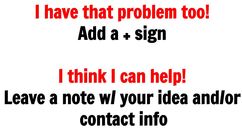
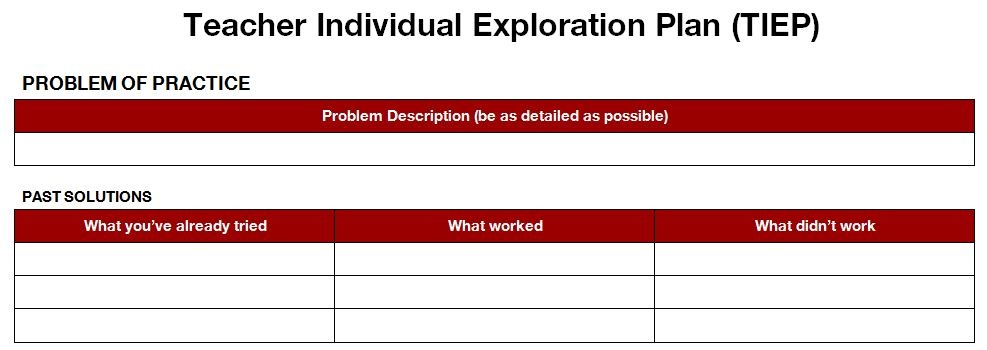

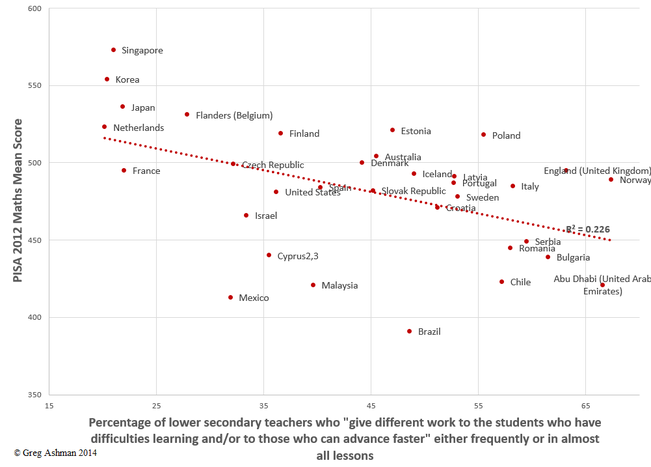


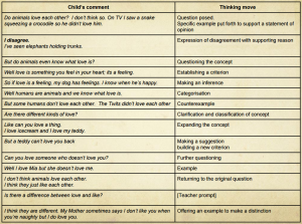
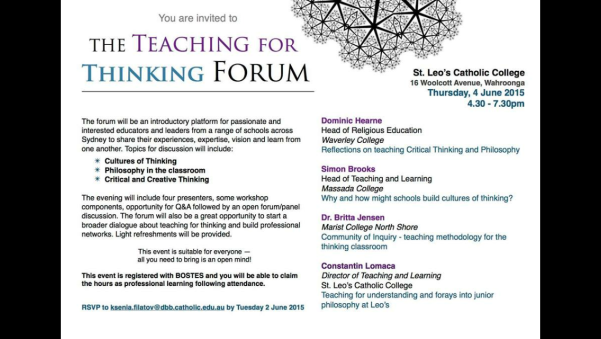
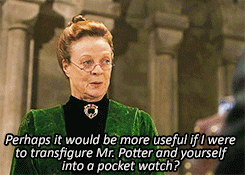
 RSS Feed
RSS Feed